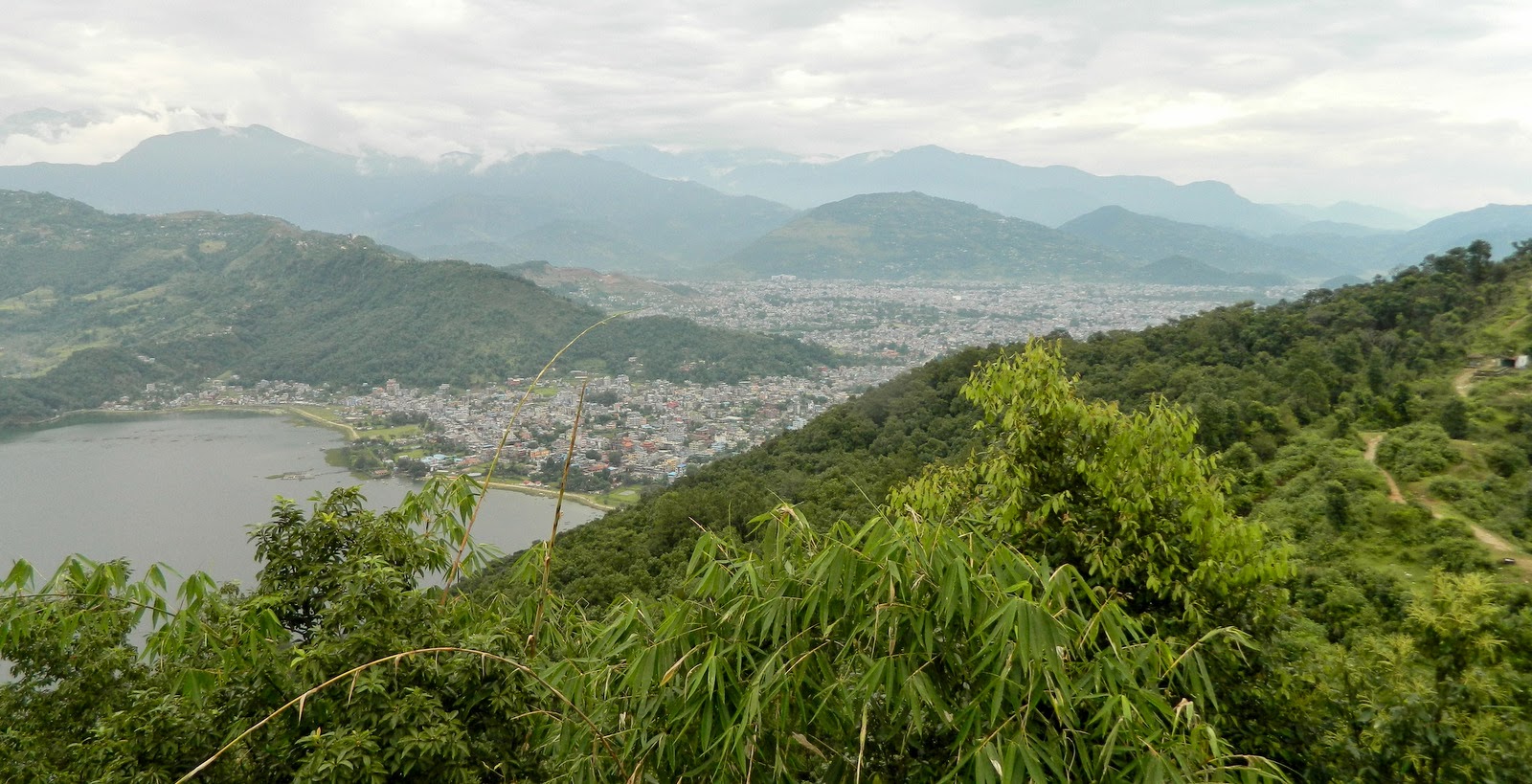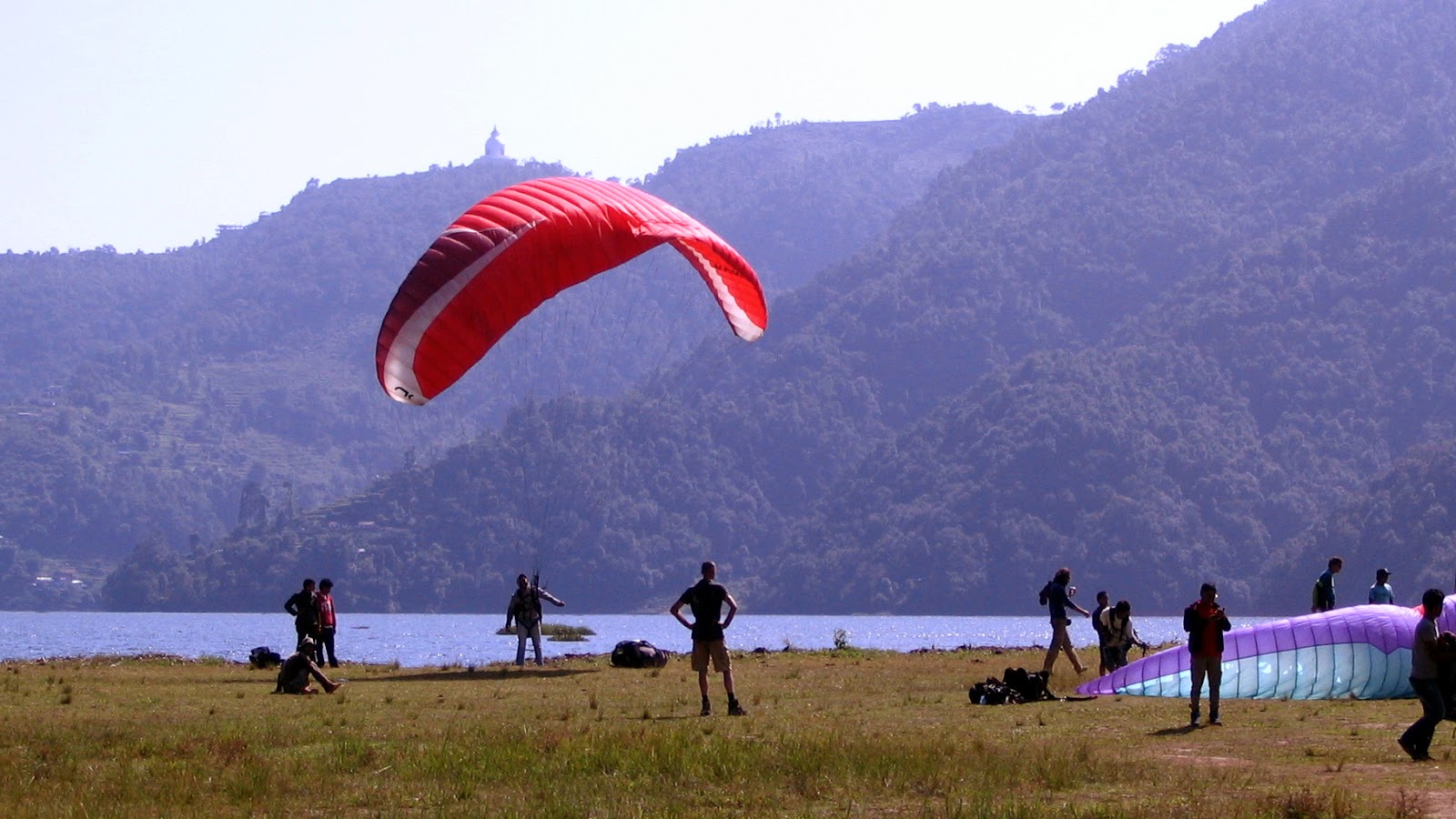POKHARA:
IL TEMPIO DELLA PACE / PEACE TEMPLE
 |
Il Tempio della Pace nel mondo (Shanti Stupa), luogo sacro per i Buddhisti e gli Hinduisti.
The World Peace Temple (Shanti Stupa), a
sacred site both for Buddhists and Hindus.
|
Il
Tempio della Pace (Shanti Stupa)
è un tempio (“Stupa”
in sanscrito significa “tempio”)
sacro, meta di pellegrinaggio di Buddhisti e Hinduisti. Inoltre, è
fra le destinazioni più frequentate dai turisti per l'ampio panorama
che si gode a 360°: dalle cime himalayane alla ricca valle dove
giace la città di Pokhara, dai campi terrazzati al Lago Phewa (Phewa
Tal).
La bianca costruzione si trova su di un poggio a 1100 metri di quota,
proprio di fronte a Sarangkot. Una strada asfaltata porta sul
crinale. Sono venti minuti d'auto da Pokhara... Ottobre. Non siamo
fortunati. La giornata non è delle migliori. La coda del monsone
indiano si fa ancora sentire. Tempo imbronciato con grosse nuvole
nere. Pioggia a tratti. Abbiamo a disposizione un taxi con autista
che, per l'occasione, ci fa anche da guida. L'edificio, imponente e
di recente costruzione, è un simbolo di pace (“Shanti”
in sanscrito significa “pace”).
Il suo colore di un bianco brillante è un faro di luce ben visibile
da tutta la valle sottostante. A pianta circolare, vi si accede
tramite un' ampia scalinata con una struttura a due livelli. Al
secondo livello si eleva l'alta cupola che ospita le quattro grandi
statue del Buddha, rivolte verso le quattro direzioni cardinali,
Nord, Sud, Est, Ovest. Dal forte significato simbolico, rappresentano
altrettanti importanti passaggi della vita di Gautama Buddha,
collegati con le località dove ebbero luogo. Vale a dire...
LUMBINI
(Nepal): vi nacque il principe Siddhartha, il futuro Buddha storico,
verso il 563 a.C.
BUDDHAGAYA
(India): dove, all'età di 35 anni, raggiunse lo stato di
Illuminazione e divenne il “Buddha”.
ISIPATHANA
(India): il luogo del suo primo sermone.
KUSINARA
(India): qui morì nel 486 a. C.
Fotografie
di R. Frigerio
POKHARA:
THE WORLD PEACE STUPA
The
World Peace Temple (Shanti Stupa)
is a prominent pilgrimage sacred site both for Buddhists and Hindus
and a popular tourist destination in Pokhara. The white temple lies
on the ridge of a hillock at 1,100 metres above sea level, just
opposite Sarangkot. From here you can have a bird's-eye view ranging
from the Himalayan peaks to the city of Pokhara, from the richly
cultivated terraced fields to the still waters of Lake Phewa (Phewa
Tal).
A twenty minutes' ride on a black-topped road leads us up the
hillside to the summit. Our taxi driver reveals himself to be a good
tour guide, when necessary. October... Bad weather due to unexpected
monsoon rains, though! The temple (“Stupa”
meaning “temple”
in Sanskrit), a grand and imposing building, is a symbol of universal
peace (Shanti
meaning “peace”
in Sanskrit). Its brilliant white colour is a beacon of pure light,
clearly visible from the valley below. A circular building, you have
access to its tiers, by going up the stone stairs. The dome, rising
on the second tier, displays four impressive statues of Lord Buddha,
placed at the four compass points. Each statue represents a major
event in his life and is named according to the place where it took
place. So we have...
LUMBINI
(Nepal): the birthplace of Prince Siddhartha, the future Buddha,
about the year 563 BCE.
BUDDHAGAYA
(India): there he attained Enlightenment and became the “Buddha”.
He was 35.
ISIPATHANA
(India): the place where he delivered his first sermon to his
followers.
KUSINARA
(India): where he died in 486 BCE.
Photographs:
courtesy of R. Frigerio
 |
Il Lago Phewa e la Città di Pokhara dal Tempio della Pace.
Phewa Lake and Pokhara City as seen from the Peace Temple.
|


















